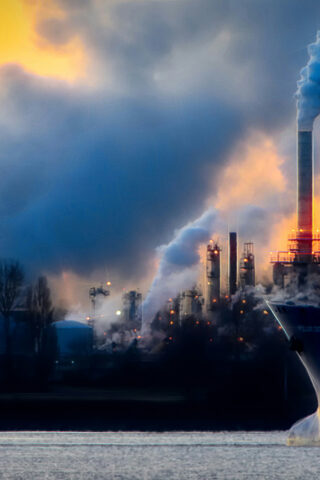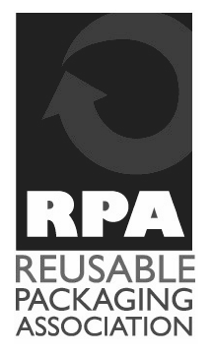Simple Flying, byDecember 11, 2020, 5 minute read
As the world begins to emerge from lockdowns and secondary and tertiary waves, the temporary lull in emissions caused by aviation is set to come back in full force. Before the pandemic, sustainability was the industry’s biggest challenge. The standard way of going green has been to purchase carbon offset credits. However, with United Airlines declaring it is investing millions of dollars into carbon capture technology, how do these solutions compare?
Carbon offsetting alone is not enough, Kirby says
On Thursday, United Airlines announced a new ambitious plan to cut its emissions by no less than 100% by 2050. While the oneworld alliance has made similar statements, United is the first carrier to proclaim that, beyond sustainable aviation fuels and carbon offsetting, it will be investing in a technology known as direct carbon air capture.
We have been hearing about carbon offset schemes in relation to aviation sustainability efforts for years now. However, investing in carbon capture is an entirely new initiative for an airline. United Airlines’ CEO Scott Kirby hopes it will inspire other carriers to do the same as “buying carbon offsets alone is just not enough.”
So what exactly is the difference between carbon offsets and carbon capture? Let’s take a closer look at each concept.
Offsetting in exchange for credits
Carbon offset schemes allow individuals and companies to invest in environmental projects worldwide to ‘make up’ for the greenhouse gas emissions they themselves produce.
Organizations that will make sure our conscience can feel a little lighter cater to specific industries and activities. They run the gambit from events and commuting to home appliances and heating, and, of course, air travel.
The projects invested in are directed at either preventing (such as renewable energy sources) or reducing (such as reforestation) greenhouse gas emissions. Offsets are measured in metric tons of carbon dioxide-equivalent, and the buyer then receives credits which “offset” their own contribution to pollution.
CORSIA
The United Nation’s Carbon Offsetting and Reduction Scheme for International Aviation (CORSIA) aims to ensure that emissions from aviation above 2020 levels are offset elsewhere. The Paris Agreement covers domestic aviation for those countries which have ratified it (and not withdrawn). However, international flights come under the auspices of the UN’s International Civil Aviation Organisation (ICAO).
CORSIA will begin operating in January 2021. A voluntary pilot phase will last for two years. All airlines operating routes between two participating states will need to reach the offset requirements for their flights. Thus far, 78 countries have volunteered to participate in the pilot.
Voluntary schemes ineffective, reports suggest
Many airlines already operate their own voluntary carbon offset schemes for passengers. SAS, Delta, KLM, and Qantas, among others, all offer travelers to pay an extra fee to fly a little greener. Qatar Airways and Wizz both recently also launched their own versions, while British Airways and JetBlue themselves bear the costs of offsetting all domestic flights.
However, according to a BBC report from last year, less than half of the world’s biggest airlines offered carbon offset opportunities for their customers. And, perhaps even sadder, only about 1% of the passengers of the ones that do choose to take the airline up on the offer.
Ethical concerns and forward crediting
Meanwhile, that is not the only issue with carbon offsetting schemes. They are often marketed as quick-fix, an easy way to pass the problem on to someone else; out of sight, out of mind. There have also been ethical concerns surrounding reforestation programs where entire populations have been arbitrarily evicted from land areas. Financial incentives offered by such schemes can also lead to other problematic behavior.
Of course, there is also a delay. While an airline or a passenger may offer to offset their carbon emissions today, a newly planted tree will take years to absorb carbon in any significant amount. This means that the offset is bought and paid for long before it is certain if it will be achieved, often called “forward crediting.” Thus, the equation of carbon offset is somewhat eschewed and heavily reliant on unknown hypotheticals.
That being said, some projects invest both on the social and environmental level or provide incentives for timber companies to let their trees grow for longer. It is important to research and make certain that the companies we choose to sponsor are legitimate and truly make a difference, especially in an essentially unregulated field. Hopefully, we can also trust airlines to have done so for us.
Direct carbon capture
Another technology that works with what is happening in the atmosphere right now is direct carbon air capture. As the name suggests, this involves drawing CO2 directly from the air. It can then be stored in the ground or utilized to produce new fuels, chemicals, or other materials containing carbon dioxide.
When it is stored, it is permanently removed from the atmosphere. This results in zero emissions. According to the intergovernmental International Energy Agency (IEA), there are currently 15 direct carbon air capture plants worldwide (although this may have increased slightly since the agency’s last publication). Combined, they capture over 9,000 tons of CO2 per year.
While over 30 facilities are being planned, the technology is still incredibly costly. It needs policy incentives and investments into research to scale up and make any significant dent in our carbon debt repayment.
Local and general CCS
There are two forms of carbon capture. One is a localized version that can be utilized for specific companies at their production facilities, trapping the CO2 directly at its emission source. This has actually been around for much longer than we may realise, as oil and gas companies have used it as a means to enhance recovery.
In the other version, the plant sucks carbon right from the general atmosphere. In either case, there are three main steps to the carbon capture and storage (CSS) process. First, the carbon must be trapped and separated from other gases. It must then be transported to a storage location. The next step means storing it far away from the atmosphere, which means deep underground known as geological sequestration, or, potentially, underwater.
Combined efforts for the world’s sixth-largest polluter
In 2018, flights were responsible for 2.4% of global energy-related carbon dioxide emissions. If aviation were a country, it would land in sixth place for total emissions. While other industries are also major contributors to pollution, reducing aviation’s impact is paramount for, without being too dramatic about it, future life on earth.
While carbon offsetting is a significant step towards mitigating climate change, if commercial aviation increases according to pre-pandemic projections, more consequential efforts such as carbon capture will be key to achieving zero emissions by mid-century.
What are your thoughts on carbon offsetting vs. carbon-capturing? Do you think airlines should invest in one or the other or both? Let us know in the comments.








